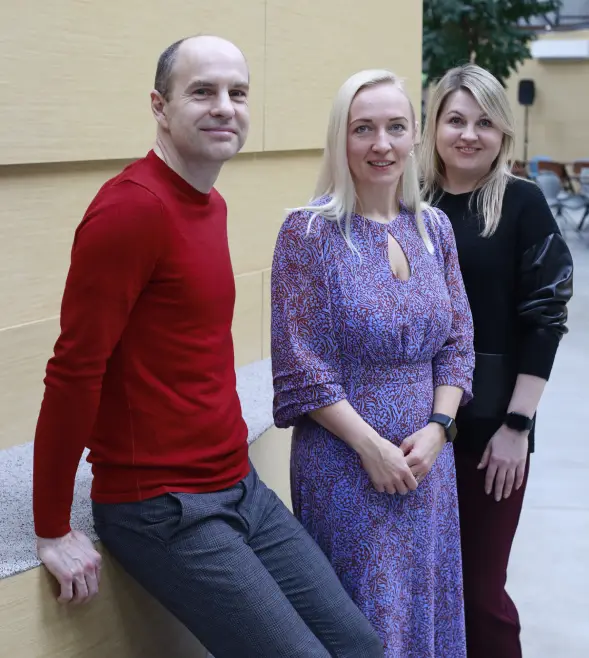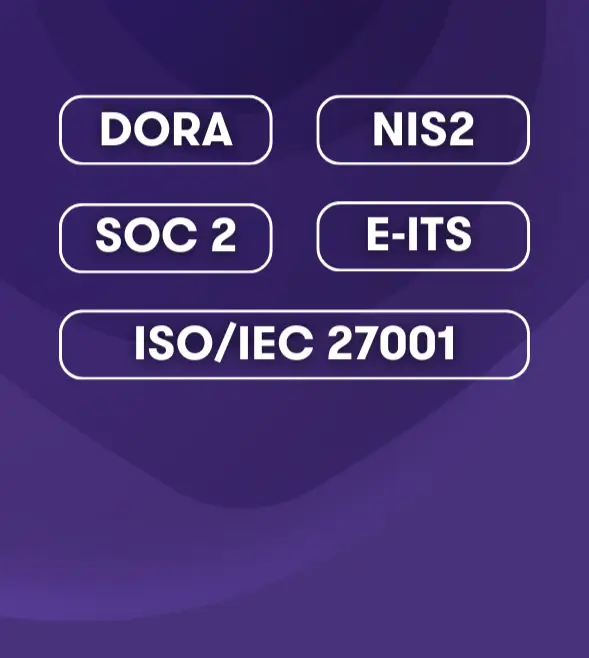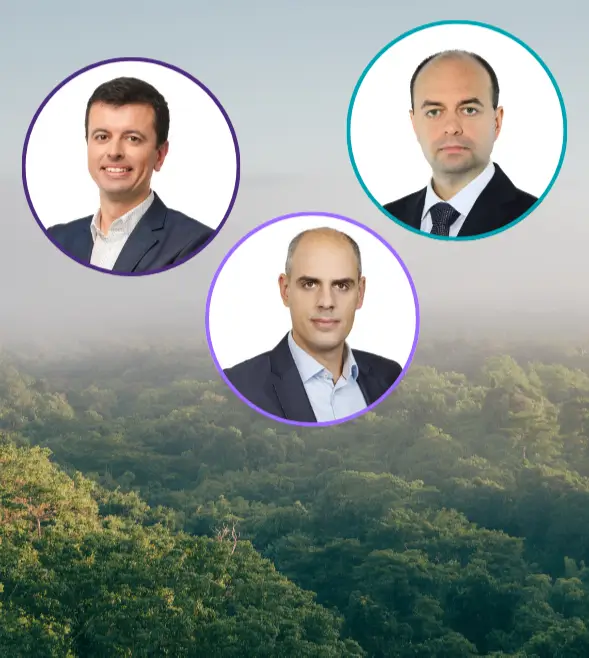-
Other audit services
We help clients with the application and use of foreign financial aid of EU and other funds and help prepare financial reports.
-
Audit calculator
The calculator will answer if the company's sales revenue, assets or number of employees exceed the limit of an inspection or audit.
-
Payroll and related services
We perform payroll accounting for companies whether they employ a few or hundreds of employees.
-
Tax accounting
Grant Thornton Baltic's experienced tax specialists support accountants and offer reasonable and practical solutions.
-
Reporting
We prepare annual reports in a timely manner. We help to prepare management reports and various mandatory reports.
-
Consolidation of financial statements
Our experienced accountants and advisors help you prepare consolidation tables and make the consolidation process more efficient.
-
Consultancy and temporary staff
Our experienced specialists advise on more complex accounting transactions, rectify poor historic accounting, and offer the temporary replacement of an accountant.
-
Outsourced CFO service
Our CFO service is suitable for companies of all sizes and in all industries. We offer services to our clients in the required amount and competences.
-
Assessment of accounting processes
We help companies to implement accounting practices that are in compliance with local and international standards.
-
Accounting services for small businesses
We offer affordable service for small businesses. We help organize processes as smartly and cost-effectively as possible.
-
Cryptocurrency accounting
We keep up with blockchain technology to serve and advise crypto companies. We are supported by a network of colleagues in 130 countries.
-
Trainings and seminars
Our accountants have experience in all matters related to accounting and reporting. We offer our clients professional training according to their needs.

-
Business advisory
We offer legal support to both start-ups and expanding companies, making sure that all legal steps are well thought out in detail.
-
Fintech advisory
Our specialists advise payment institutions, virtual currency service providers and financial institutions.
-
Corporate advisory
We advise on legal, tax and financial matters necessary for better management of the company's legal or organizational structure.
-
Transaction advisory
We provide advice in all aspects of the transaction process.
-
Legal due diligence
We thoroughly analyze the internal documents, legal relations, and business compliance of the company to be merged or acquired.
-
In-house lawyer service
The service is intended for entrepreneurs who are looking for a reliable partner to solve the company's day-to-day legal issues.
-
The contact person service
We offer a contact person service to Estonian companies with a board located abroad.
-
Training
We organize both public trainings and tailor made trainings ordered by clients on current legal and tax issues.
-
Whistleblower channel
At Grant Thornton Baltic, we believe that a well-designed and effective reporting channel is an efficient way of achieving trustworthiness.

-
Business model or strategy renewal
In order to be successful, every company, regardless of the size of the organization, must have a clear strategy, ie know where the whole team is heading.
-
Marketing and brand strategy; creation and updating of the client management system
We support you in updating your marketing and brand strategy and customer management system, so that you can adapt in this time of rapid changes.
-
Coaching and development support
A good organizational culture is like a trump card for a company. We guide you how to collect trump cards!
-
Digital services
Today, the question is not whether to digitize, but how to do it. We help you develop and implement smart digital solutions.
-
Sales organisation development
Our mission is to improve our customers' business results by choosing the right focuses and providing a clear and systematic path to a solution.
-
Business plan development
A good business plan is a guide and management tool for an entrepreneur, a source of information for financial institutions and potential investors to make financial decisions.
-
Due diligence
We perform due diligence so that investors can get a thorough overview of the company before the planned purchase transaction.
-
Mergers and acquisitions
We provide advice in all aspects of the transaction process.
-
Valuation services
We estimate the company's market value, asset value and other asset groups based on internationally accepted methodology.
-
Forensic expert services
Our experienced, nationally recognized forensic experts provide assessments in the economic and financial field.
-
Business plans and financial forecasts
The lack of planning and control of cash resources is the reason often given for the failure of many businesses. We help you prepare proper forecasts to reduce business risks.
-
Outsourced CFO service
Our CFO service is suitable for companies of all sizes and in all industries. We offer services to our clients in the required amount and competences.
-
Reorganization
Our experienced reorganizers offer ways to overcome the company's economic difficulties and restore liquidity in order to manage sustainably in the future.
-
Restructuring and reorganisation
We offer individual complete solutions for reorganizing the structure of companies.
-
Corporate taxation
We advise on all matters related to corporate taxation.
-
Value added tax and other indirect taxes
We have extensive knowledge in the field of VAT, excise duties and customs, both on the national and international level.
-
International taxation
We advise on foreign tax systems and international tax regulations, including the requirements of cross-border reporting.
-
Transfer pricing
We help plan and document all aspects of a company's transfer pricing strategy.
-
Taxation of transactions
We plan the tax consequences of a company's acquisition, transfer, refinancing, restructuring, and listing of bonds or shares.
-
Taxation of employees in cross-border operations
An employee of an Estonian company abroad and an employee of a foreign company in Estonia - we advise on tax rules.
-
Tax risk audit
We perform a risk audit that helps diagnose and limit tax risks and optimize tax obligations.
-
Representing the client in Tax Board
We prevent tax problems and ensure smooth communication with the Tax and Customs Board.
-
Taxation of private individuals
We advise individuals on personal income taxation issues and, represent the client in communication with the Tax and Customs Board.
-
Pan-Baltic tax system comparison
Our tax specialists have prepared a comparison of the tax systems of the Baltic countries regarding the taxation of companies and individuals.
-
Internal audit
We assist you in performing the internal audit function, performing internal audits and advisory work, evaluating governance, and conducting training.
-
Internal Audit in the Financial Services Sector
We provide internal audit services to financial sector companies. We can support the creation of an internal audit function already when applying for a sectoral activity license.
-
Audit of projects
We conduct audits of projects that have received European Union funds, state aid, foreign aid, or other grants.
-
Prevention of money laundering
We help to prepare a money laundering risk assessment and efficient anti-money laundering procedures, conduct internal audits and training.
-
Risk assessment and risk management
We advise you on conducting a risk assessment and setting up a risk management system.
-
Custom tasks
At the request of the client, we perform audits, inspections and analyzes with a specific purpose and scope.
-
External Quality Assessment of the Internal Audit Activity
We conduct an external evaluation of the quality of the internal audit or provide independent assurance on the self-assessment.
-
Whistleblowing and reporting misconduct
We can help build the whistleblowing system, from implementation, internal repairs and staff training to the creation of a reporting channel and case management.
-
Information security management
We provide you with an information security management service that will optimise resources, give you an overview of the security situation and ensure compliance with the legislation and standards.
-
Information security roadmap
We analyse your organisation to understand which standards or regulations apply to your activities, identify any gaps and make proposals to fix them.
-
Internal audit of information security
Our specialists help detect and correct information security deficiencies by verifying an organization's compliance with legislation and standards.
-
Third party management
Our specialists help reduce the risks associated with using services provided by third parties.
-
Information security training
We offer various training and awareness building programmes to ensure that all parties are well aware of the information security requirements, their responsibilities when choosing a service provider and their potential risks.
-
Digital Operational Resilience Act (DORA)
We will help you create a DORA implementation model that meets your company's needs and ensures that you meet the January 2025 deadline.

-
ESG advisory
We help solve issues related to the environment, social capital, employees, business model and good management practices.
-
ESG audit
Our auditors review and certify sustainability reports in line with international standards.
-
Sustainable investments
We help investors conduct analysis of companies they’re interested in, examining environmental topics, corporate social responsibility and good governance practices.
-
Sustainable tax behaviour
Our international taxation specialists define the concept of sustainable tax behaviour and offer services for sustainable tax practices.
-
ESG manager service
Your company doesn’t necessarily need an in-house ESG manager. This role can also be outsourced as a service.

-
Recruitment services – personnel search
We help fill positions in your company with competent and dedicated employees who help realize the company's strategic goals.
-
Recruitment support services
Support services help to determine whether the candidates match the company's expectations. The most used support services are candidate testing and evaluation.
-
Implementation of human resource management processes
We either assume a full control of the launch of processes related to HR management, or we are a supportive advisory partner for the HR manager.
-
Audit of HR management processes
We map the HR management processes and provide an overview of how to assess the health of the organization from the HR management perspective.
-
HR Documentation and Operating Model Advisory Services work
We support companies in setting up HR documentation and operational processes with a necessary quality.
-
Employee Surveys
We help to carry out goal-oriented and high-quality employee surveys. We analyse the results, make reports, and draw conclusions.
-
HR Management outsourcing
We offer both temporary and permanent/long-term HR manager services to companies.

-
Digital strategy
We help assess the digital maturity of your organization, create a strategy that matches your needs and capabilities, and develop key metrics.
-
Intelligent automation
We aid you in determining your business’ needs and opportunities, as well as model the business processes to provide the best user experience and efficiency.
-
Business Intelligence
Our team of experienced business analysts will help you get a grip on your data by mapping and structuring all the data available.
-
Cybersecurity
A proactive cyber strategy delivers you peace of mind, allowing you to focus on realising your company’s growth potential.
-
Innovation as a Service
On average, one in four projects fails and one in two needs changes. We help manage the innovation of your company's digital solutions!

Author: Tõnis Elling
Until the beginning of 2015, the procedure set forth in Section 43 of the VAT Act for imposing VAT on electronically supplied services applies only to third-country persons engaged in enterprise. In accordance with the rules valid up until the end of 2014, it is possible to apply special procedure for VAT taxation of electronically supplied services (referred to in this guide simply as “special procedure”) on condition that the service is supplied by a third-country person engaged in enterprise that is not registered in any Member State as a taxable person (referred to hereinafter as third-country taxable person) to an EU Member State person that is not registered as a taxable person or limited taxable person – i.e. to an end consumer, usually an individual.
Under the new rules that come into force on 1 January 2015, however, Estonian taxpayers will also fall, under certain conditions, within the scope of application of the special procedure – if they supply electronic service in another Member State to local non-VAT payers.
Pursuant to subsection 2 (4) of the VAT Act, the following are electronically supplied services: website supply; web-hosting; distance maintenance of programmes and equipment; transfer and updating of software transmitted by electronic means; images, text and information transmitted by electronic means, and making electronic databases available; music, films and games, including gambling games, transmitted by electronic means; political, cultural, sporting, scientific and entertainment broadcasts transmitted by electronic means; distance education and other services similar to the services specified above.
Starting in 2015, the definition of the place where electronic communication services and electronic services are supplied will change. This place will be the location of the customer regardless of whether the customer is a person engaged in enterprise or not. Thus the change will affect the provision of the above services to individuals. The definition of the place where the said services are supplied will not change in the case of persons engaged in enterprise; i.e. the general rule (B2B) specified in the VAT Act will remain valid; in the case of cross-border transactions, VAT will be accounted for and paid by the recipient of the service (inverse taxation).
To apply VAT on electronic communication service or electronically supplied service, Section 43 of the VAT Act will be amended effective 1 January 2015, which will simplify the compliance with VAT obligations on provision of these services in other Member States. The application of the special procedure is not obligatory for taxable persons. Taxable persons may also use general procedure for taxation of the services covered by the special procedure. In such a case, in order to supply electronic communication service or electronic service to a person not engaged in enterprise in another Member State, the taxable person must register itself as a VAT taxable person in the Member State of the customer’s location and comply with tax obligation in that Member State just like other taxable persons in that Member State. If the supplier of the said service wishes to apply special procedure, it shall declare and pay to the Estonian Tax and Customs Board the VAT imposed on services supplied in the other Member State; the tax board shall transfer the sum received to the tax authority of the other country.[1]
Determination of the customer’s location will become relevant in the case that electronic communication service or electronic service is supplied to a person from another Member State who is not engaged in enterprise. In certain cases, it is not possible for the service provider to determine the customer’s location. In such a case, other evidence is used to determine the location. The customer’s location shall be determined, for instance, according to the customer’s billing address or the IP address of the device used by the customer. If the customer uses a pre-payment on a SIM card to pay for the service, it is presumed that the customer’s location is the country identified by the country code on the SIM card. A customer’s location can also be considered to be the location of his or her landline telephone connection, if there is no other evidence of the customer’s location. If the customer uses a pay phone, WiFi hotspot or Internet café, a service provider has no way to verifying the customer’s actual seat or place of residence and the customer’s location is considered to be the country in which the service was used. [2]
In the case of electronic communication service or electronic service, Estonian taxable persons and third-country persons engaged in enterprise may apply the special VAT taxation procedure for services covered by the special procedure on condition that
- the third-country person engaged in enterprise who is not registered in any Member State as a taxable person supplies a service covered by the special procedure to a person from a Member State who is not registered as a taxable person or limited taxable person;
- a taxable person whose enterprise is seated in Estonia supplies a service covered by the special procedure to a person with a seat or residence in another Member State who is not registered as a taxable person or limited taxable person;
- a taxable person whose enterprise is seated outside the Community but whose permanent place of business is in Estonia supplies a service covered by the special procedure to a person with a seat or residence in another Member State who is not registered as a taxable person or limited taxable person.
According to the explanatory memorandum to the VAT Act amendment, a taxable person seated in the Community may choose the Member State in which it is seated to apply the special procedure. Thus a taxable person whose enterprise is located in Estonia may, regardless of whether it is registered in other Member States as a taxable person or not, choose solely Estonia (as the so-called registration Member State) for applying the special procedure. A taxable person whose enterprise is seated outside the European Union but who has a permanent place of business in Estonia as a taxable person, may select Estonia as the registration Member State for the application of the special procedure even if it has registered permanent places of business in other Member States as a taxable person or it is registered as a taxable person for some other reason. A third-country person who is not registered in the Community as a taxable person may select a country where it does not have to register in order to apply the special procedure. The application of the special procedure in Estonia means that Estonia is the so-called registration Member State and the person complies through the Estonian tax authority with the VAT obligation arising upon provision of services covered by the special procedure in another country.
A person may have one so-called registration Member State for applying the special procedure. If a person has selected Estonia as the registration Member State for applying the special procedure, it shall file a declaration to the Estonian Tax and Customs Board on provision of services covered by the special procedure in other countries and pay VAT to the Estonian Tax and Customs Board. If a taxable person applying the special procedure in Estonia is registered as a VAT taxable person in other Member States, the tax obligation related to provision of the services covered by the special procedure shall be complied with in accordance with general procedure in the Member States where the person is registered as a taxable person.
The special procedure is applied only if the services covered by the special procedure are supplied to a person not registered as a taxable person or limited taxable person (i.e. to an individual). An electronic system shall be created to apply the special procedure. A person who wishes to apply or applies the special procedure shall submit an application, changes to submitted data and VAT declarations for services covered by the special procedure via the electronic portal on the tax authority’s website.
A person applying the special procedure is obliged to apply the special procedure on all services covered by the special procedure that are taxed on conditions set forth in Section 43 of the VAT Act. The special procedure and general procedure are not to be applied simultaneously.
The special procedure is not applied in Member States where the person applying the special procedure is registered as a taxable person or where the company is seated.
Taxable persons who wish to apply the special procedure or third-country persons engaged in enterprise who wish to register in Estonia on the basis of the special procedure shall submit an application to that effect via the electronic portal on the tax authority’s website. No separate registration number shall be issued to a taxable person registered in Estonia for applying the special procedure. A third-country person who wishes to apply the special procedure in Estonia shall be issued a taxable person registration number.
The special procedure shall be applied by a taxable person for implementing the special procedure starting from the first day of the quarter following submission of the application to the tax authority or registration of a third-country person engaged in enterprise. Thus the special procedure shall generally be applied starting from the first day of the quarter following notification thereof or registration of a third-country person. If the services covered by the special procedure were started to be provided earlier, the taxable person may start to apply the special procedure before the first day of the quarter following the notification regarding application of the special procedure. In such a case, the application of the special procedure shall begin on the day of provision of the service covered by special procedure, on condition that the taxable person and the third-country person have submitted the application set forth in subsection 43 (4) of the VAT Act by the 10th day of the month subsequent to the provision of the service.
The person applying the special procedure shall provide notice via the electronic portal on the tax authority’s website of cessation of provision of services converted by special procedure, of changes to its activity that render it impossible to apply the special procedure and changes in the data submitted in the application specified in subsection 43 (4) of the VAT Act – by the 10th day of the month subsequent to the month of the change. If the person continues providing services covered by the special procedure in the Community, it must report cessation of application of special procedure at least 15 days before the end of the quarter in which it intends to end application of special procedure.
The tax authority shall cease application of special procedure with regard to the taxable person or delete the third-country person engaged in enterprise from the register if:
- the person has notified that it no longer supplies services covered by special procedure;
- the person has not within eight consecutive quarters, supplied services taxable on the basis of special procedure or it no longer complies with the conditions for application of special procedure;
- the person has repeatedly failed to comply with requirements established for application of special procedure;
- the person continues providing services covered by the special procedure although has notified the tax authority of cessation of application of special procedure.
The decision on cessation of application of special procedure shall be sent electronically by the tax authority to the person applying the special procedure. The decision shall enter into force on the first day of the quarter following the day the decision was sent. If the cessation of application of special procedure is related to changes in the seat or permanent place of business of the company, the decision shall enter into force on the date of the change.
The person applying special procedure shall submit, via the electronic portal on the tax authority’s website, a VAT declaration on services covered by the special procedure, regarding every quarter. The VAT declaration for services covered by special procedure shall be filed by the 20th day of the month following the quarter. A person applying special procedure is obliged to pay the VAT amount payable by the date on which the VAT declaration is filed.
If the payment for the services covered by special procedure was made in a currency other than the euro, the euro exchange rate determined by the European Central Bank valid on the last day of the declaration period shall be applied to express the necessary data in the VAT declaration for services covered by special procedure in euros.
A taxable person applying special procedure may not deduct VAT paid upon acquiring goods or receiving services in another Member State for the purpose of service covered by special procedure as input VAT from payable VAT, but it does have the right to ask the tax authority of the relevant Member State for a refund.
Similarly to the provisions of the rules valid until the end of 2014, a third-country person engaged in enterprise who has opted to use the special procedure may not appoint a tax representative. The basis for the provision is Article 204 of the VAT Directive.
[1] Explanatory memorandum to Act to amend the VAT Act (506 SE). Available here >
[2] Explanatory memorandum to Act to amend the VAT Act (506 SE). Available here >




